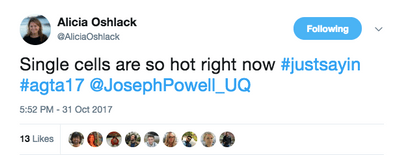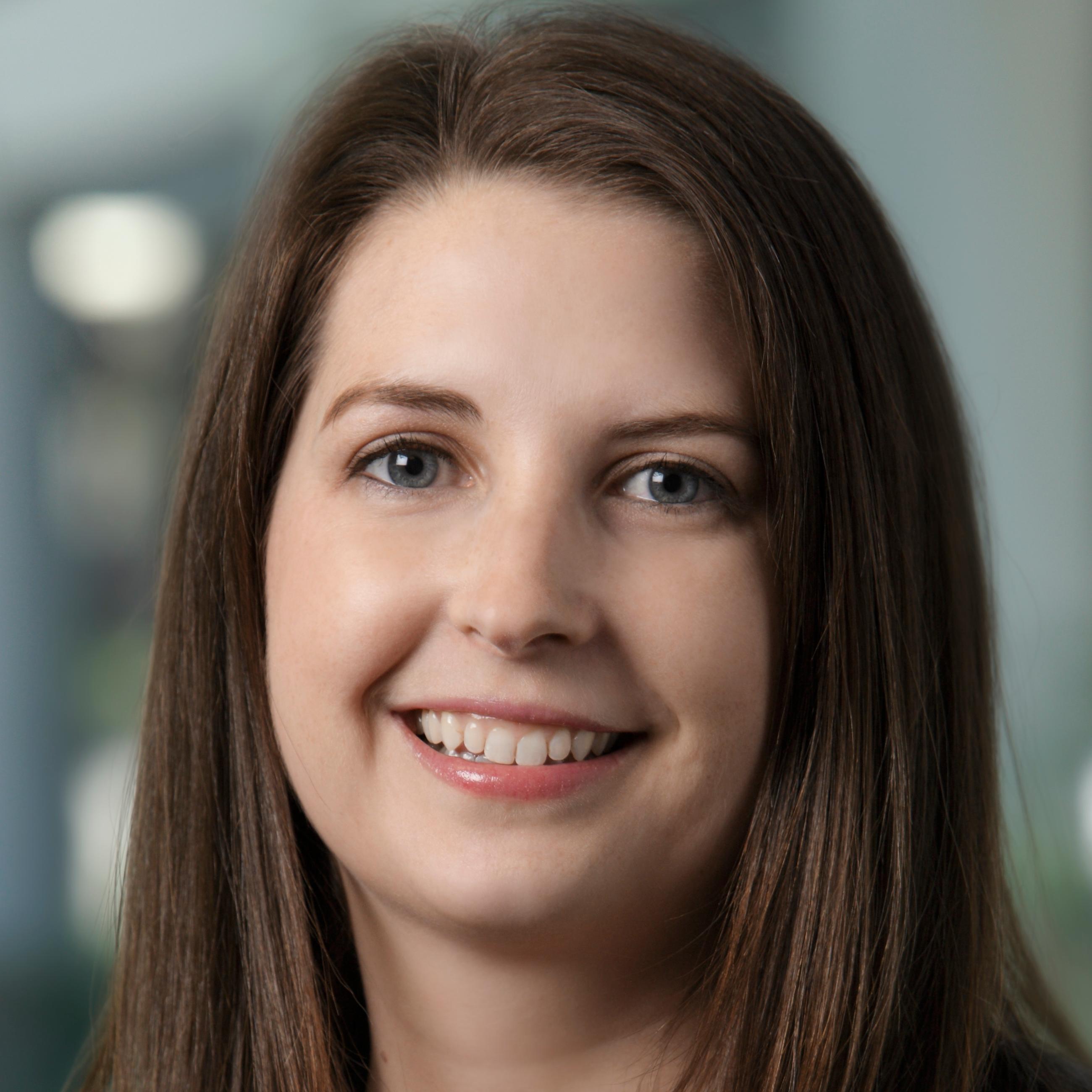Genomics Down Under: AGTA 2017 Wrap-up
Guest Author: Deanna Church, 10x Genomics
The 2017 Australasian Genomic Technologies Association (AGTA) in lovely Hobart, Tasmania wrapped up last week. Brian Fritz, one of our product managers, and I were lucky enough to attend the event this year. This meeting was a nice mixture of scientific topics, with some talks following a more technical bent, and others focused more on the scientific side. Additionally, there was a nice mixture of both senior and junior presenters. There was also an active twitter channel using the hashtag #agta17. Here is a wrap-up of some of the things we found interesting.
Before the meeting began, there were two pre-meeting workshops. One of these focused on the field of genome editing, while the other focused on the technical issues of single-cell gene expression analysis. Brian gave a talk on aspects of our Chromium™ Single Cell Solutions and participated in a panel discussion. It was clear that a common theme of the meeting would be both applications and technical challenges of single-cell analysis.

The meeting officially started Sunday evening with a beautiful Welcome to Country by Kartanya Maynard. I was then honored to be able to give the opening oration, where I provided some historical perspective on my views about how technology has shaped our view of biology. But, the meeting really started in earnest the next morning with Elinor Karlsson proving us with an overview of her work on the genetics in dogs, particularly focused on behavioral traits. The rest of this session focused on complex traits in humans, particularly focusing on the use of large pedigrees to inform studies. The Population Genetics section was anchored by Vanessa Hayes as she described the work her group is doing to both uncover the diversity in African populations, but also how this data is useful for understanding human history. The Computational Biology session saw the second keynote speaker, Kimberly Reynolds, from the University of Texas Southwestern Medical Center, describe her work on dissecting metabolic pathways in bacterial in an effort to build the genetic equivalent of circuit diagrams for biological systems. On a day filled with lots of great science, one highlight was the ‘Lightning Poster Session’ were poster presenters were given 1 minute to describe their work and entice people to visit their poster. The evening ended with a wonderful dinner at the Museum of New and Old Art (MONA).
Tuesday started with the Single-Cell Genomics and Genome Assembly sessions. We heard about efforts to assemble native Australian species with many technologies, including 10x Genomics Linked-Reads. We also heard a beautiful story from Nona Farbehi on their work using the Chromium™ Single Cell 3’ Solution to understand cell populations in both normal and diseased hearts. This was followed by sessions on Synthetic Biology and more Computational Biology. Keynote speaker Pauline Ng gave a great talk on lessons she learned as a computational biologist working on a diverse set of projects. There were more great ‘Lightning Poster’ Presentations and a final session on Epigenetics and Transcriptomics, with more focus on the power and challenges of doing biology at the single cell level.
The conference ended Wednesday, but not before three more great sessions. There were more great talks on single cell transcriptomics, including Alicia Oshlack and Joseph Powell talking about their work using 10x Genomics scRNA-seq to understand development and disease. The meeting wrapped up with a talk by Sean Grimmond on his teams work using genomics to try to unravel the drivers of pancreatic cancer. This was a great session on the challenges and opportunities of single-cell genomics.
Learn more about our single-cell analysis solutions:
- Chromium™ Single Cell 3’ Solution for gene expression and Chromium™ V(D)J Solutionfor immune repertoire sequencing
- Explore single-cell RNA-seq publications
- Check out our data analysis and visualization tools - Cell Ranger and Loupe Cell Browser
- Download single-cell datasets
